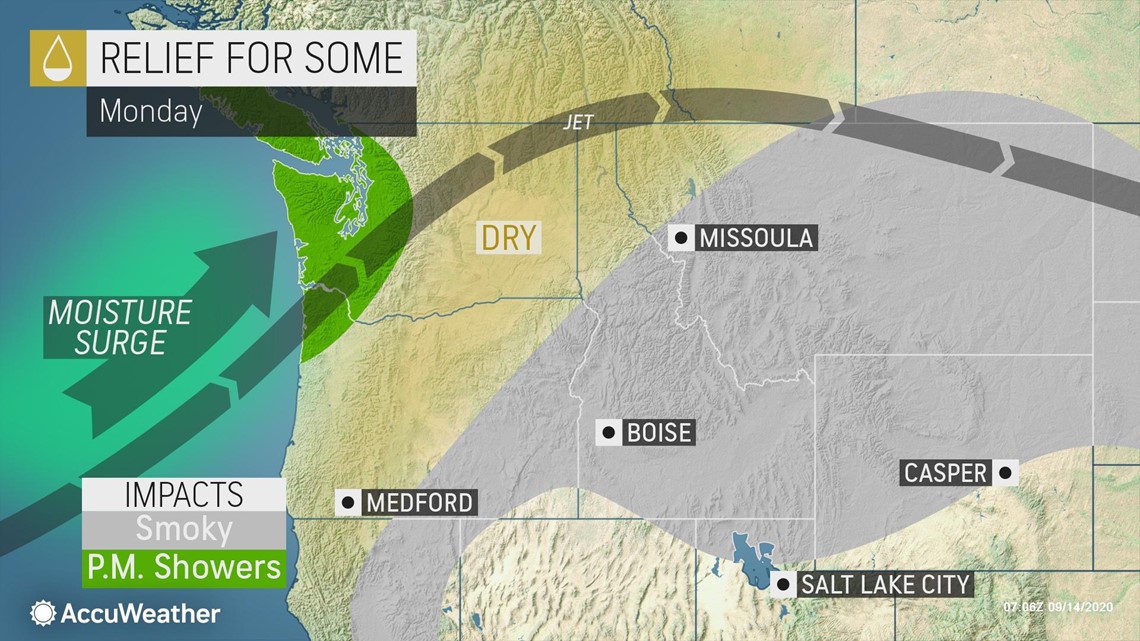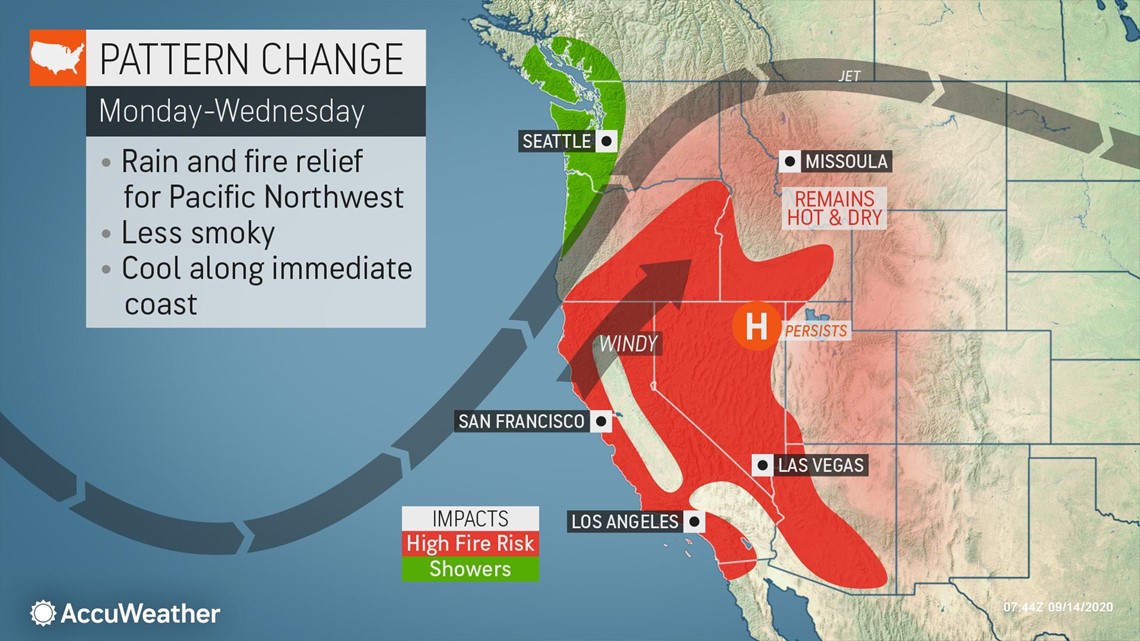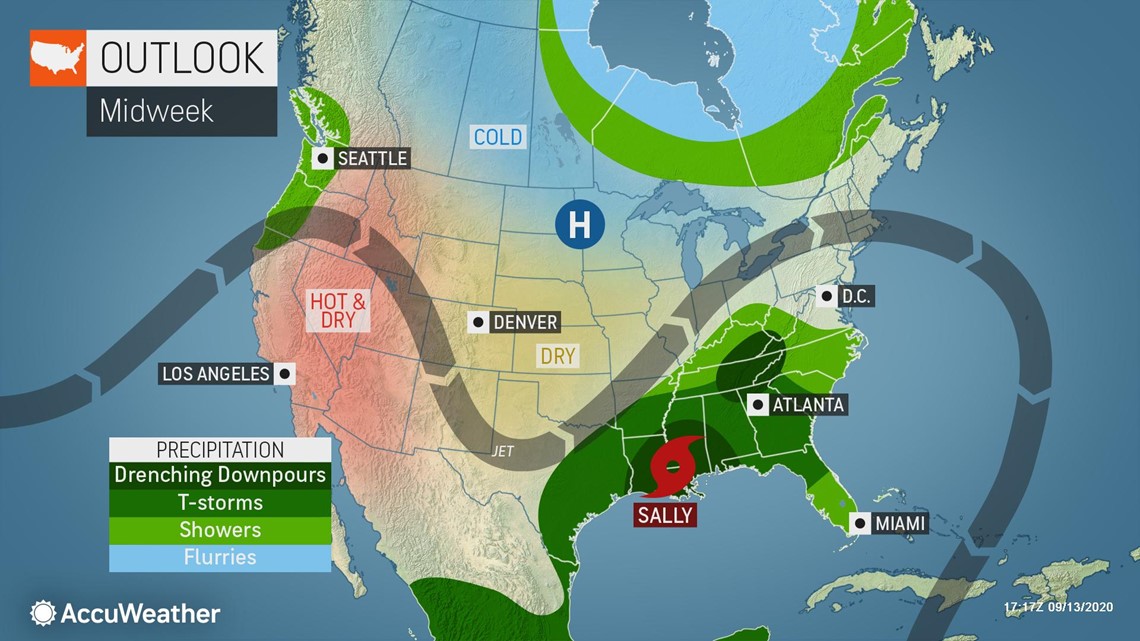As the death toll from the wildfires that have charred millions of acres and created apocalyptic scenes across the West continues to climb, forecasters say that a pattern change is imminent -- but it might not be good news for all.
Over 4.6 million acres of land are actively burning across the West, with most of these blazes ongoing in California, Washington and Oregon, according to the National Interagency Fire Center. Many of these blazes exploded in size during a high wind event around the Labor Day holiday.
At least 35 people have been killed along the West coast as a result of the blazes, and tens of thousands have been forced to evacuate, according to The Associated Press.
The amount of smoke being emitted by the blazes has led to extremely unhealthy air quality from Seattle to San Francisco and points inland. High temperatures were about 10-15 degrees Fahrenheit below normal in this corridor over the weekend as the thick smoke obscured the sun.
Experts say that Mother Nature will provide some hope for northern areas this week, but not so much for southern areas.


"Across the Pacific Northwest, there is some hope for rain this week. This rain is hopefully a sign of things to come as we head toward the climatological end of the fire season across much of the Northwest," AccuWeather Senior Meteorologist and western U.S. blogger Brian Thompson said.
The first bout of wet weather will arrive late Monday and persist along coastal areas into Wednesday as a storm system swirls just offshore. While only spotty showers are anticipated, the increased humidity levels will limit the threat of new blazes igniting and should help fire crews gain the upper hand on active fires.


Winds from the Pacific Ocean will also help to disperse smoke away from the coast, but this could lead to worsening air quality farther inland across the Northwest into midweek.
Even if the smoke disperses for a time during the day, at night when a temperature inversion sets up, smoke can once again become trapped near the ground. A temperature inversion means that the air is warming up with altitude, as opposed to cooling down.
To the south of the storm system, AccuWeather meteorologists are concerned that gusty winds may increase with no rainfall across Northern California and into the Great Basin, leading to an increased fire danger. Even farther south where winds may not be as gusty, some of the larger fires can create their own locally strong winds due to the amount of heat generated by these infernos.
The storm system is forecast to slowly move onshore late in the week, bringing more widespread showers with it, possibly as far south as Northern California.


"Nearly an inch of rain is possible across portions of the Northwest, which would be tremendous news," Thompson said.
"Spotty thunderstorms cannot be ruled out with this system, so you may have a situation where lightning may spark new fires - something we'll have to keep a close eye on," Thompson said, adding that he was confident that the positives would outweigh the negatives with this storm in the Northwest.
However, it may be a different story farther south and west.
"The bad news with this storm is that it will promote gusty winds right as it moves ashore on Thursday across the interior Pacific Northwest, with gusts up to 30 mph, which could help fuel the fires in the area prior to any beneficial rain," AccuWeather Meteorologist Tyler Roys said.
Gusty winds will also significantly increase the fire danger over the Great Basin and central Rockies late in the week, with no rainfall expected from the storm in these areas. Smoke is likely to be more widely dispersed out of California during this time frame.
"In areas where there is smoke, daily afternoon temperatures will continue to be suppressed," Roys said.
Smoke inhalation can make breathing difficult and can cause coughing, runny nose, bronchitis, wheezing and exacerbation of chronic diseases such as asthma and chronic obstructive pulmonary disease (COPD), according to Plume Labs, a company that monitors air pollution around the globe.
Officials are warning people to avoid or limit spending time outdoors amid the hazardous smoky conditions.
Residents across the western United States can monitor the air quality levels in their neighborhood with AccuWeather's Air Quality page, which includes detailed air quality forecasts.
There is a chance the 2020 fire season across the West may approach the record number of acres burned in modern history, 10.1 million in 2015.

